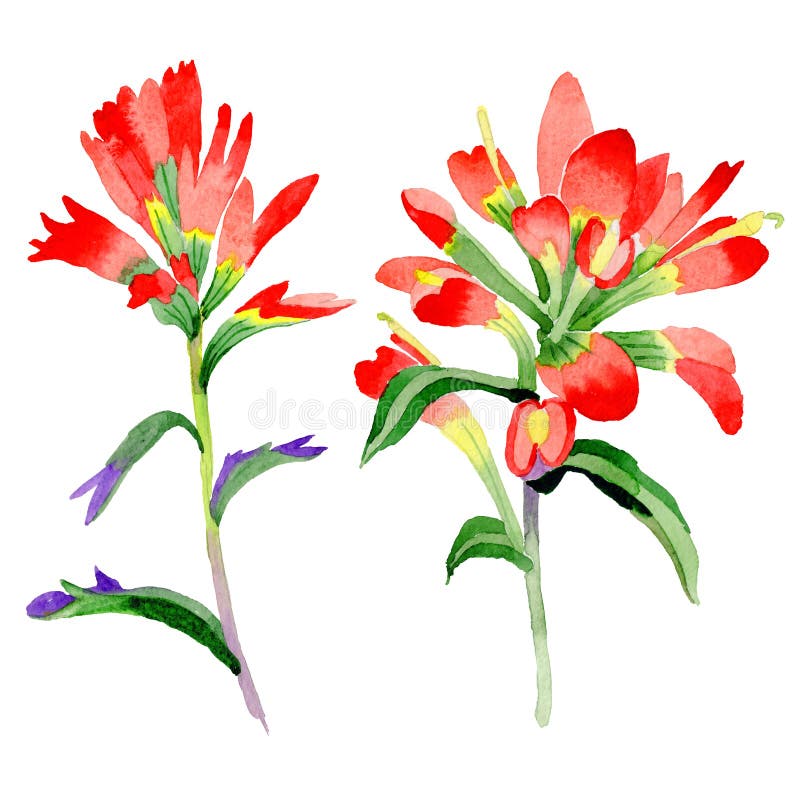

It will survive annual rainfall ranging from 100–1,100 millimetres (3.9–43.3 in). It is an adaptable species, growing in a wide range of soils derived from sandstones, quartzites, granites, shales and limestones. It is found in Renosterveld and Fynbos habitats. Haemanthus coccineus is widespread throughout the winter rainfall region in Southern Africa - from the southern parts of Namibia, to South Africa in the Cape Peninsula, to the Keiskamma River in the Eastern Cape. In the Afrikaans language it is known as bergajuin, bloedblom, and many other vernacular names. The generic name Haemanthus is derived from the Greek words haima for blood and anthos for flower coccineus is the Latin word for red or scarlet. Growing to 35 cm (14 in) tall and wide, it is a bulbous perennial with short brown stems surmounted by red flowers, the flowers appearing in spring and summer, before the strap-shaped leaves. Haemanthus coccineus, the blood flower, blood lily or paintbrush lily, is a species of flowering plant in the amaryllis family Amaryllidaceae, native to Southern Africa.

Site: Petrified Forest National Park, Navajo County, AZ Date: 2016-October-14Ĭastilleja linariifolia is one of the taller of the Indian Paintbrushes, growing as tall as four feet. They are yellow to gray-green in the early life of the plant, usually turning somewhat purplish as the plant ages. The leaves and stem of Castilleja linariifolia may be glabrous or slightly puberulent. The inflorescence of Wyoming Indian Paintbrush is slightly hairy. The corolla is yellow-green with red on parts of the edges of the corolla lobes. In Castilleja linariifolia the bracts are red (as shown here) or occasionally yellow as with most Castilleja the calyx lobes are the same color as the tips of the floral bracts. Generally in Castilleja species the more colorful parts of the inflorescence are the calyx lobes rather than the corolla of the flower. Site: Arches National Park, Grand County, UT Date: 2016-August-29 Search Our Database: Enter any portion of the Scientific, Common Name, or both.

Map courtesy of The Biota of North America Program. Leave comments on Castilleja linariifolia at this link.ĭistribution of Castilleja linariifolia in the United States and Canada: The specimens shown here were photographed in Arches National Park in the desert of eastern Utah, and in the Petrified Forest National Park of eastern Arizona. Many of those species in western North America have very limited distribution, some only in some very specific, small area, such as Castilleja aquariensis, which is found only in the subalpine meadows of the Aquarius Plateau, which is entirely contained within two counties in southern Utah.Ĭastilleja linariifolia is, however, one of the more widespread members of the genus, being found in the mountainous areas of 10 western states. The plants in this genus are hemiparasitic - while they produce their own nutrition, they also get nutrition from the roots of other plants when their roots touch and then penetrate those plants' roots (the entire Orobanchaceae family of plants are root-parasitic.) The vast majority of the approximately 200 species in the genus are found in western North America. The Castilleja genus - Indian Paintbrush - is named for Domingo Castillejo, an 18th-century Spanish botanist. Wyoming Paintbrush, Narrow-leaved Indian Paintbrush, Desert Paintbrush - Castilleja linariifoliaįamily: Orobanchaceae - Broom-rape familyĬastilleja linariifolia - Wyoming Paintbrush, Narrow-leaved Indian Paintbrush, Desert Paintbrush.


 0 kommentar(er)
0 kommentar(er)
